The Maremma, a region on the southern Tuscan coast, is the wild side of Tuscany. With a rough reputation as a place of bandits and malarial swamps a few hundred years ago, it has become a fashionable place in the last twenty years, while still remaining unspoiled. It gives me a wild, expansive, anything-is-possible feel.
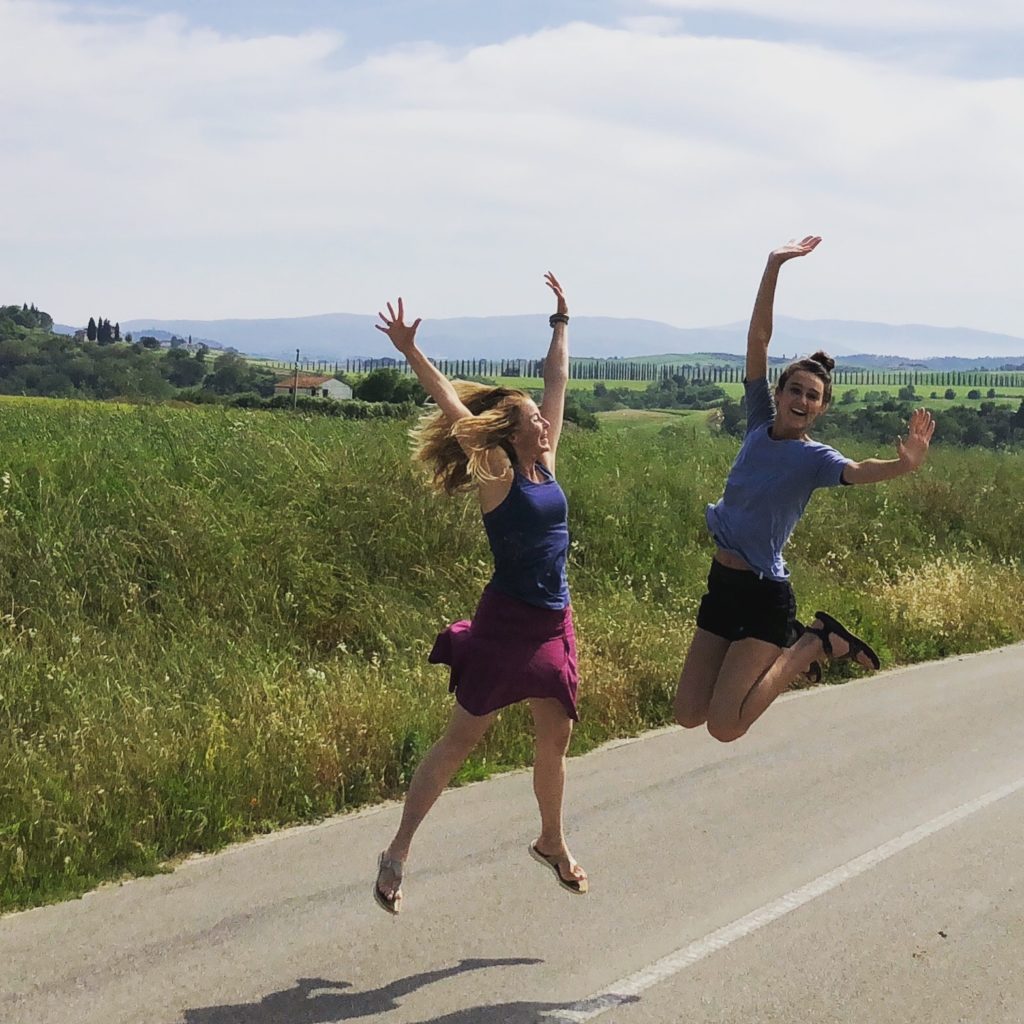
The Etruscans were the first settlers of this area and they were the most advanced civilization outside of Greece. When the Romans became dominant on the Italian peninsula, the Etruscans were partly incorporated into the Roman world, and partly obliterated by it. We are left only with the tombs of these enigmatic people.
Centuries later when Rome fell, the Maremma was mostly abandoned and the bountiful plains became malarial. (The word malaria comes from the Italian mal and aria, bad air. It was thought that the disease came from the vapors of the swamps.) In the 1800s the Medici worked to drain the swamps and Mussolini continued the job in the 1930s.
A rugged breed of cowboy has roamed this land for a few hundred years, herding white long-horned cattle. Local legend says that these cowboys (called butteri) challenged Buffalo Bill’s cowboys in a contest in Rome, in the late 1800s, and won.
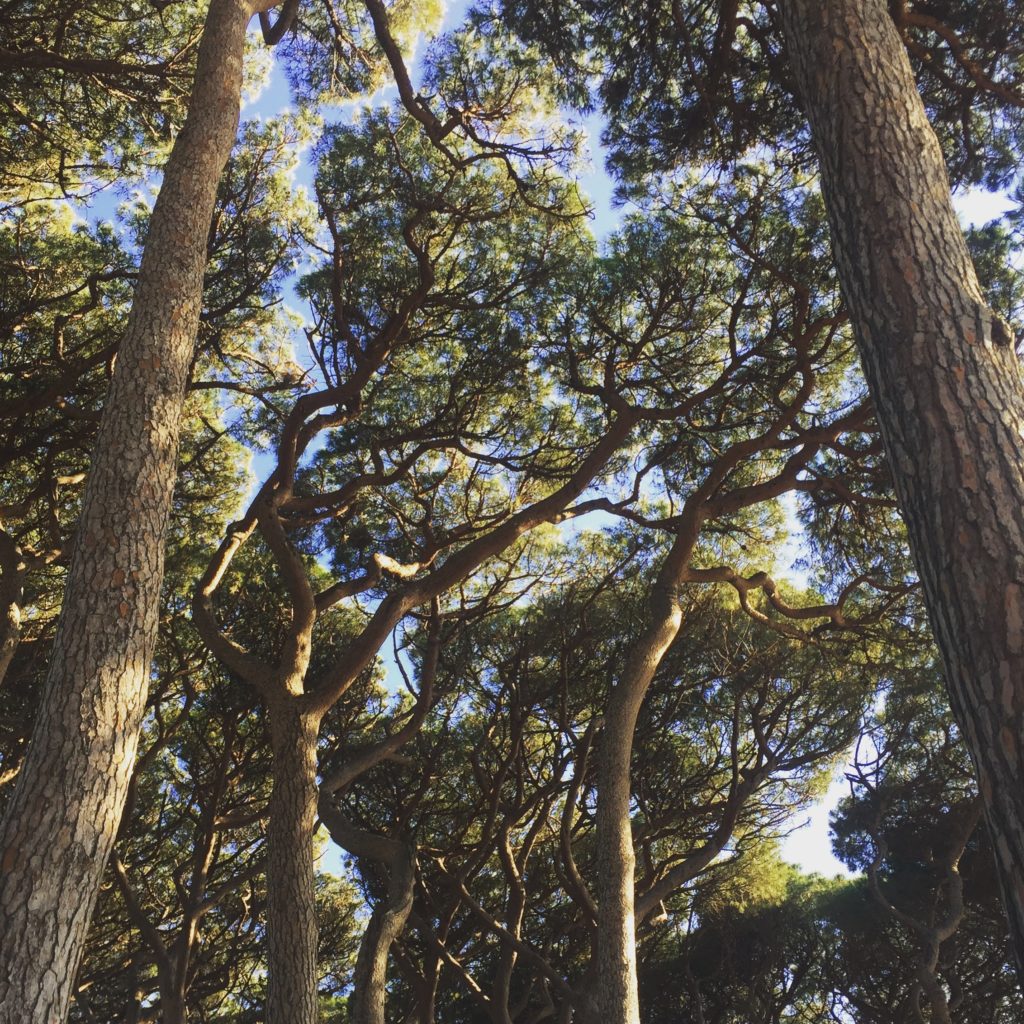
This lesser-known side of Tuscany has 250 kilometers of coast, with vast beaches sprawled between the sea and evocative woods of Umbrella Pines. Inland the hills roll pleasingly, with lost-in-time stone villages and Etruscan ruins. May is a fantastic time of year here, when these green hills are garnished with red poppies.
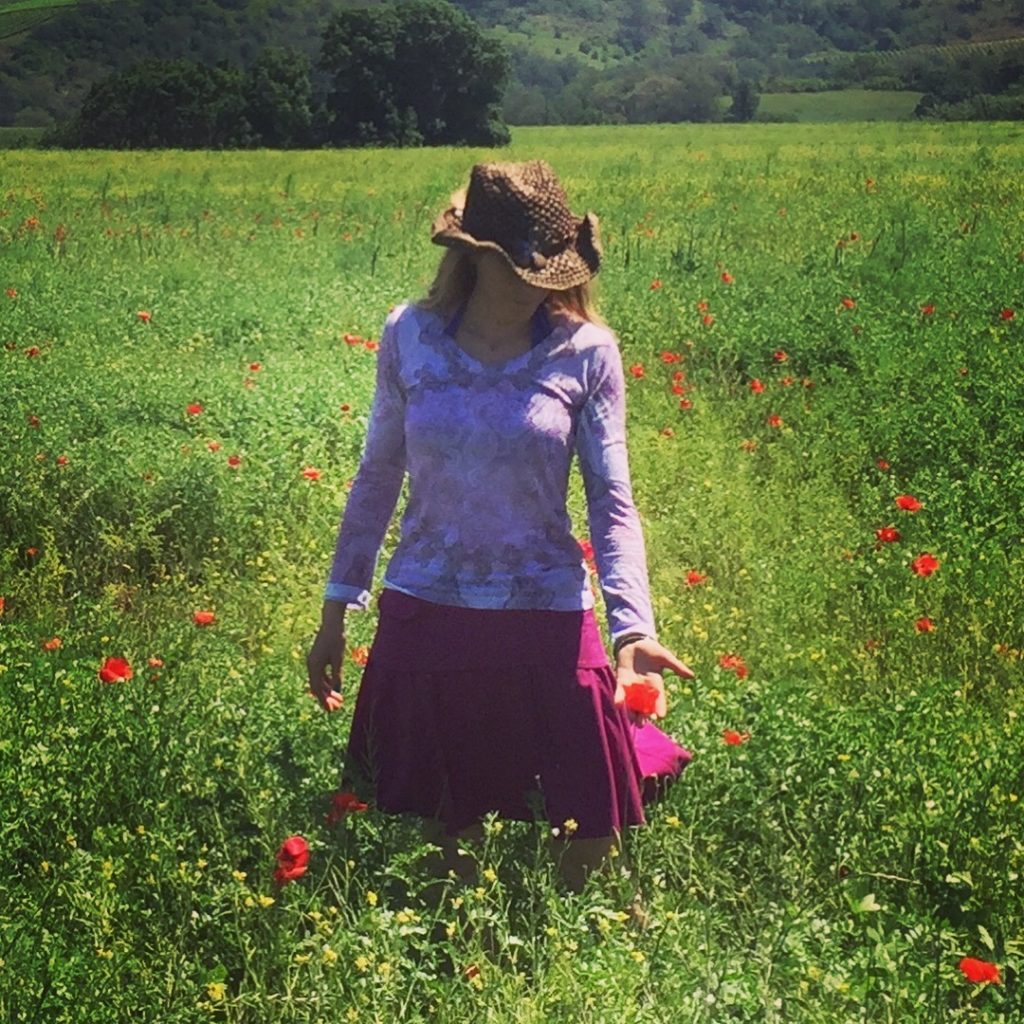
My recent three-day excursion around the Maremma started in Orbetello, a town resting on a spit of land between two lagoons. The Spanish ruled here for two centuries and one last Spanish windmill remains in Orbetello’s lagoon. Pink Flamingos are a special attraction in the WWF oasis nearby.
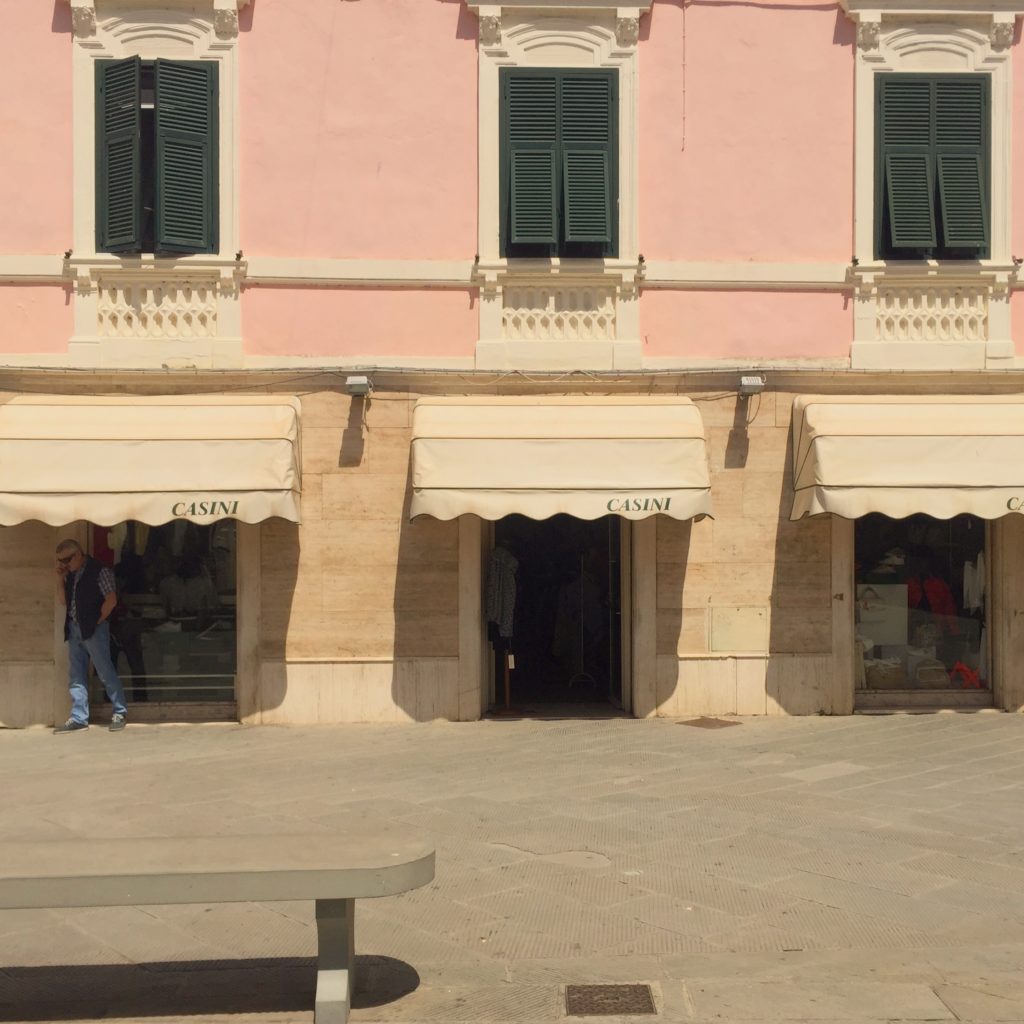
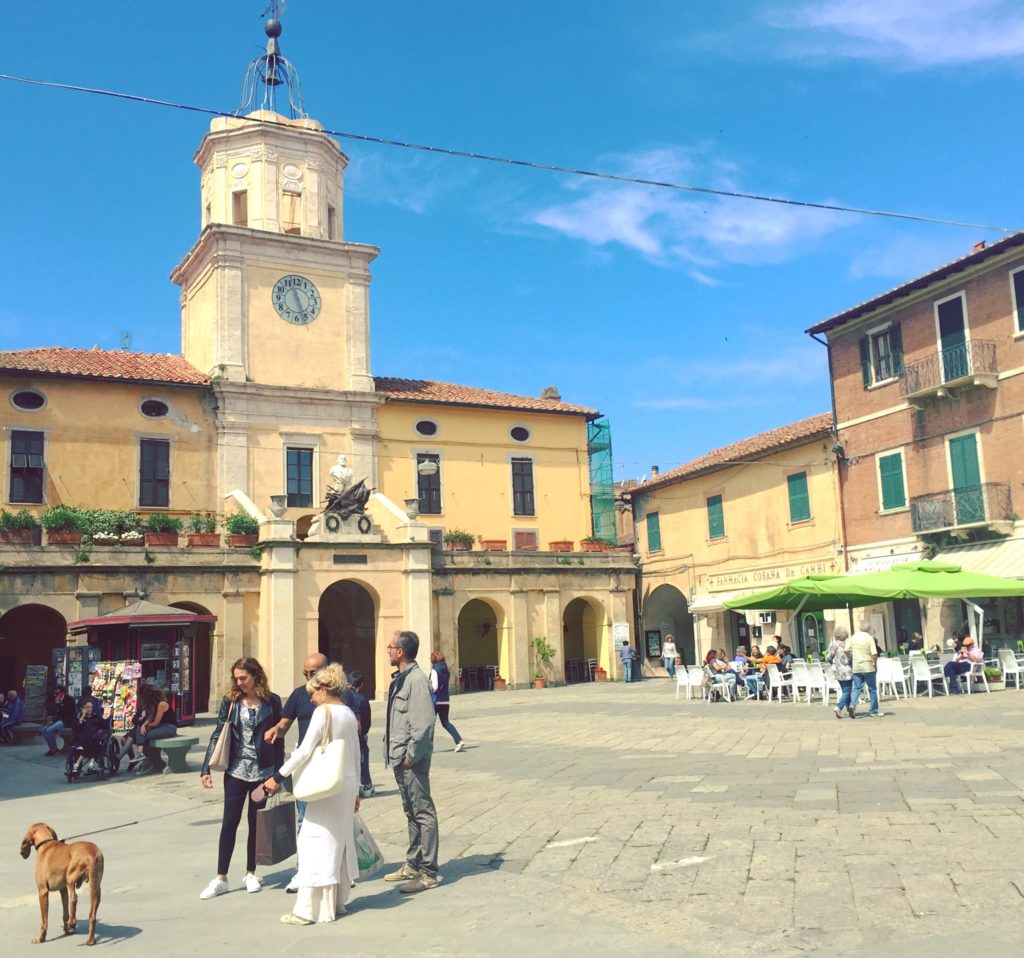
In Orbetello I met up with American friends who had recently flown to Rome. We explored Monte Argentario, a rugged and dramatic rock connected to the coast by three causeways. I’d last been to this area 17 years ago and I was happy to see very little signs of change. It had not suddenly gone bonkers the way the Cinque Terre did.
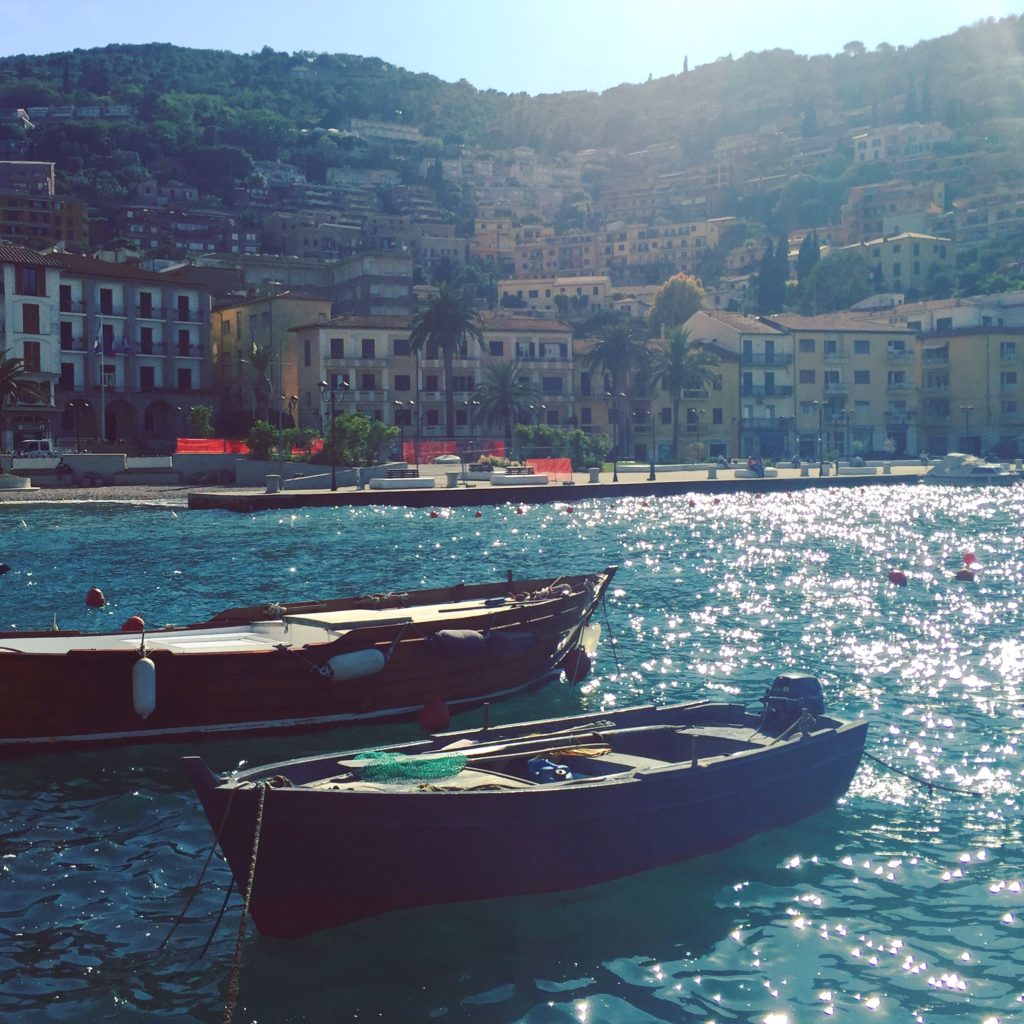
The harbor of Porto Santo Stefano was bombed by the Americans in WWII when they were trying to cut off the German supply lines, but today the town is the picture of tranquility. This is where, 17 years ago, I got a ferry to the island of Giglio. It’s time to go back!
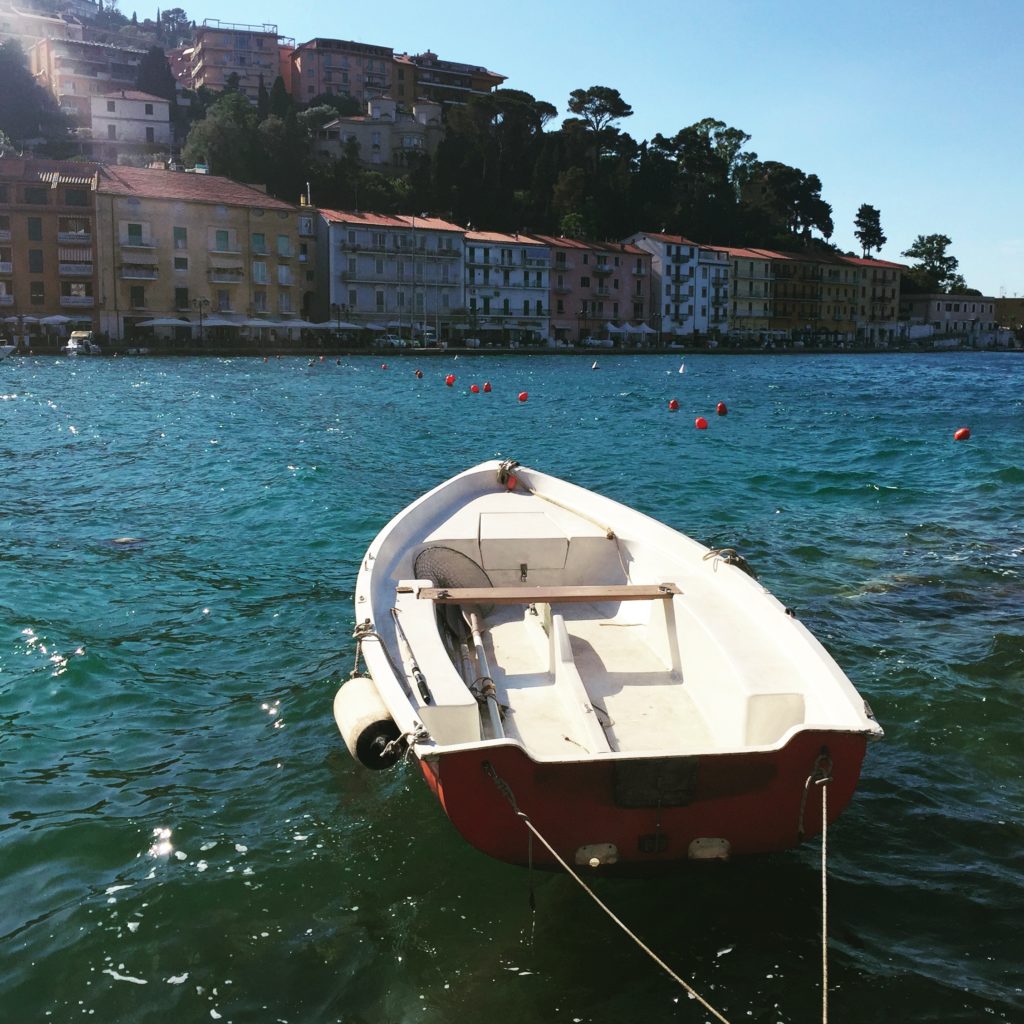
There was no time for Giglio on this trip, but we did make time for a good artisan gelato.
At Pozioni di Neve, in the second harbor of Porto Santo Stefano, I talked an animated young man about my appreciation for artisan style gelato, and he enthusiastically shared with me their philosophy, which is based on the belief that a healthy and natural diet is the best way to achieve physical and mental well-being.
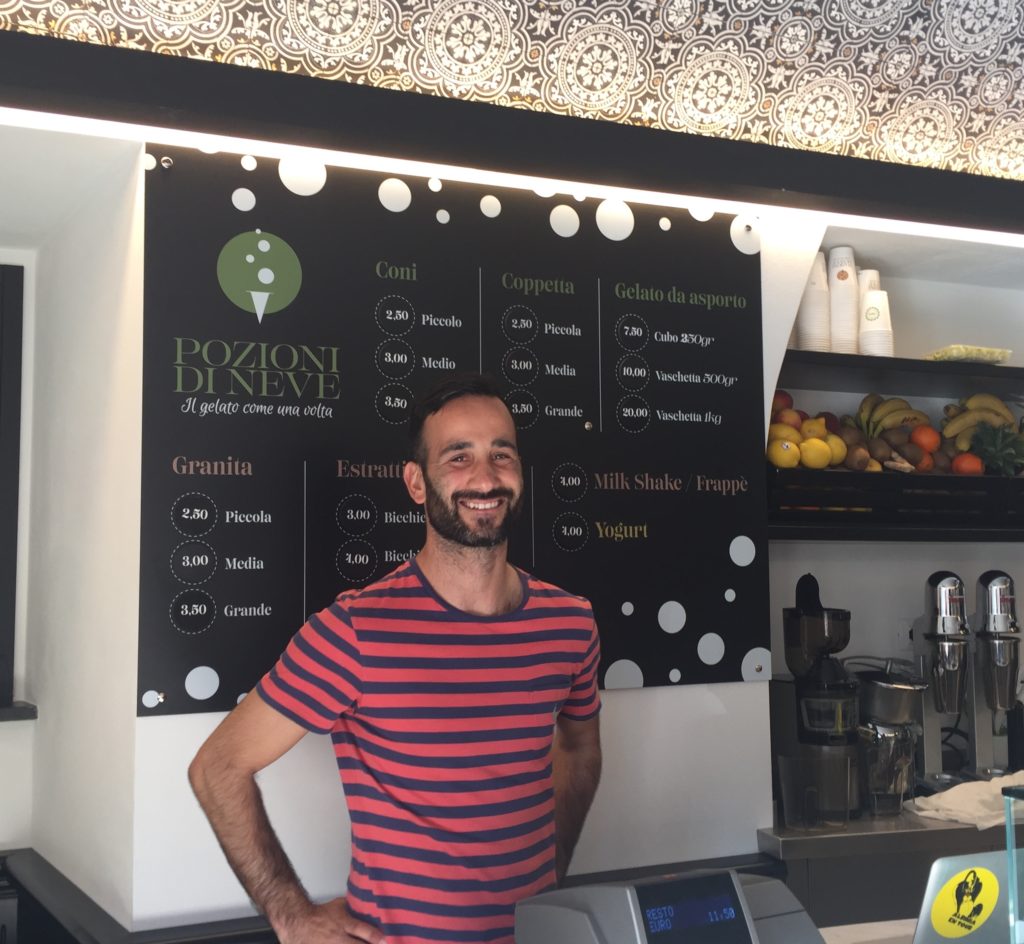
They use no hydrogenated fats, GMOs, emulsifiers, or food coloring. When I said I was impressed that the strawberry gelato was organic, he brought out the strawberries to show them to me. My kind of gelateria.
Back on the road toward Porto Ercole, we took the winding road up to the Convento dei Padri Passionisti for a view of Orbetello on its finger of land between the lagoons. Don’t miss driving up here to fill your senses with the luscious blue-green views.
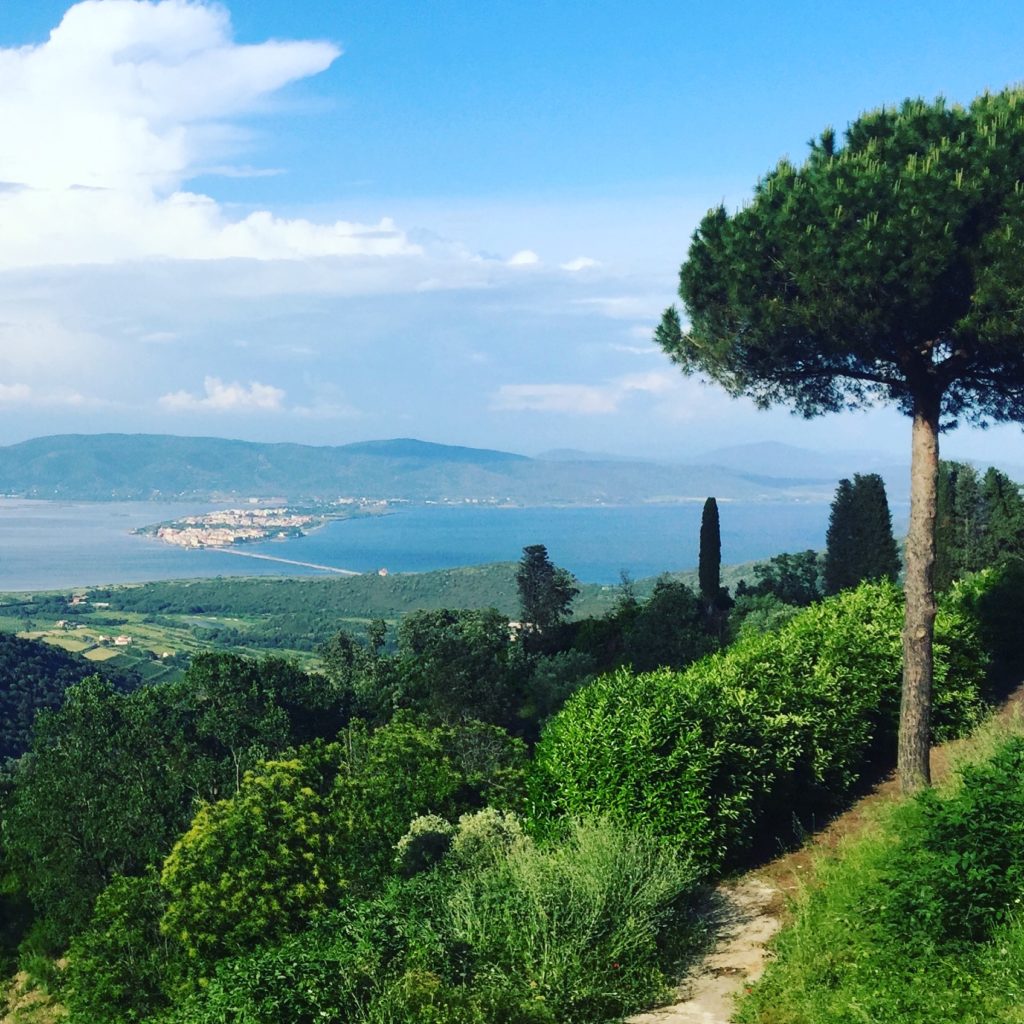
Between June and September you can dine under the trees at a rustic trattoria run by the monks. It is open in May only for lunch but from early June to early September it’s open daily for lunch and dinner.
Past Porto Ercole, we decided we needed a swim although it was already 6:30pm. Serendipity was ours. We found a charming cove with perfect flat clear water, and at that hour, it was blissfully empty.

Above Porto Ercole are two Spanish Forts, The Rocca Spagnola and the Forte Stella. The extensive network of towers and fortresses on the Maremma coast remind me of the hazardous nature of people’s lives here in the past.
We didn’t make it to Forte Stella which is known for amazing views, (leaving something for next time ensures my return) but we stopped at the Rocca Spagnola where the expanse of cerulean sea was breathtaking.
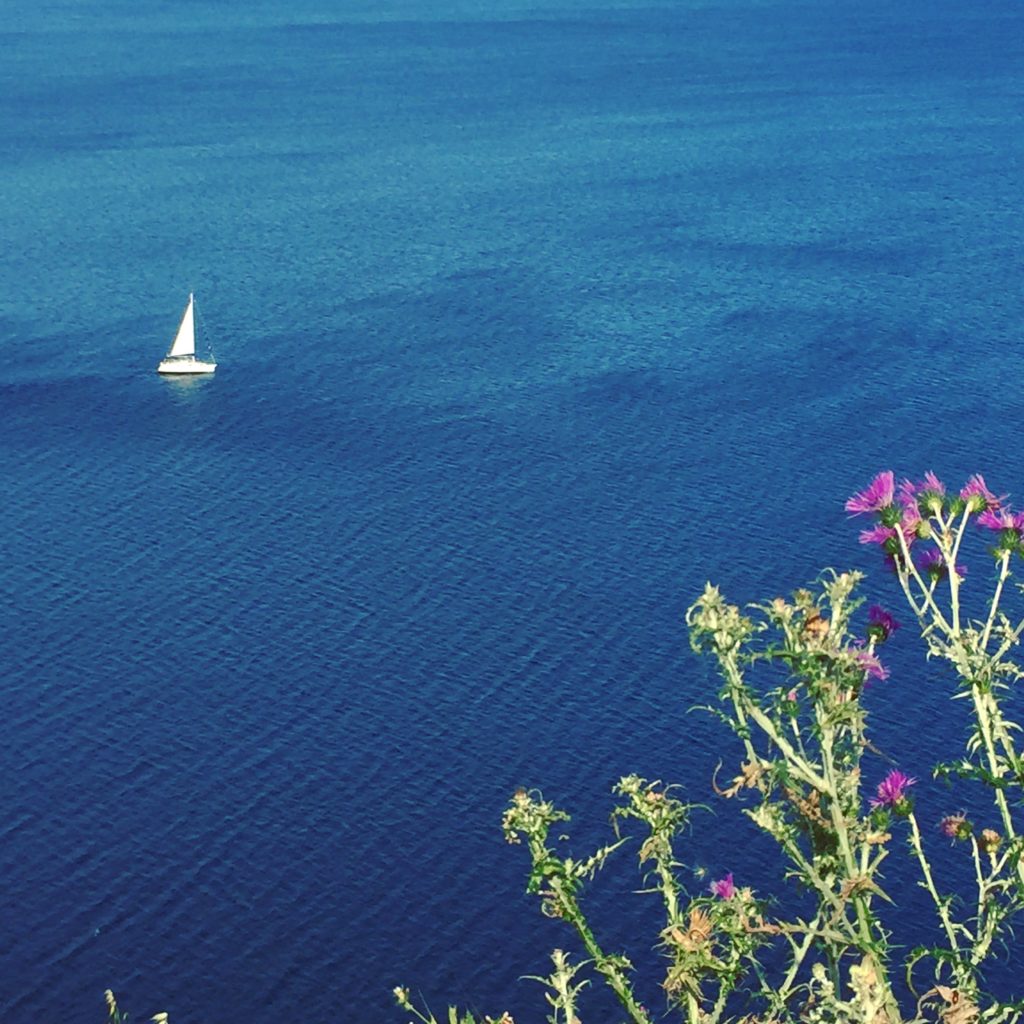
In Porto Ercole, the summer crowds had not yet arrived and we easily found a beach-side table at a bar. What could be better than an evening prosecco looking over the restful blue of this harbor?![]()
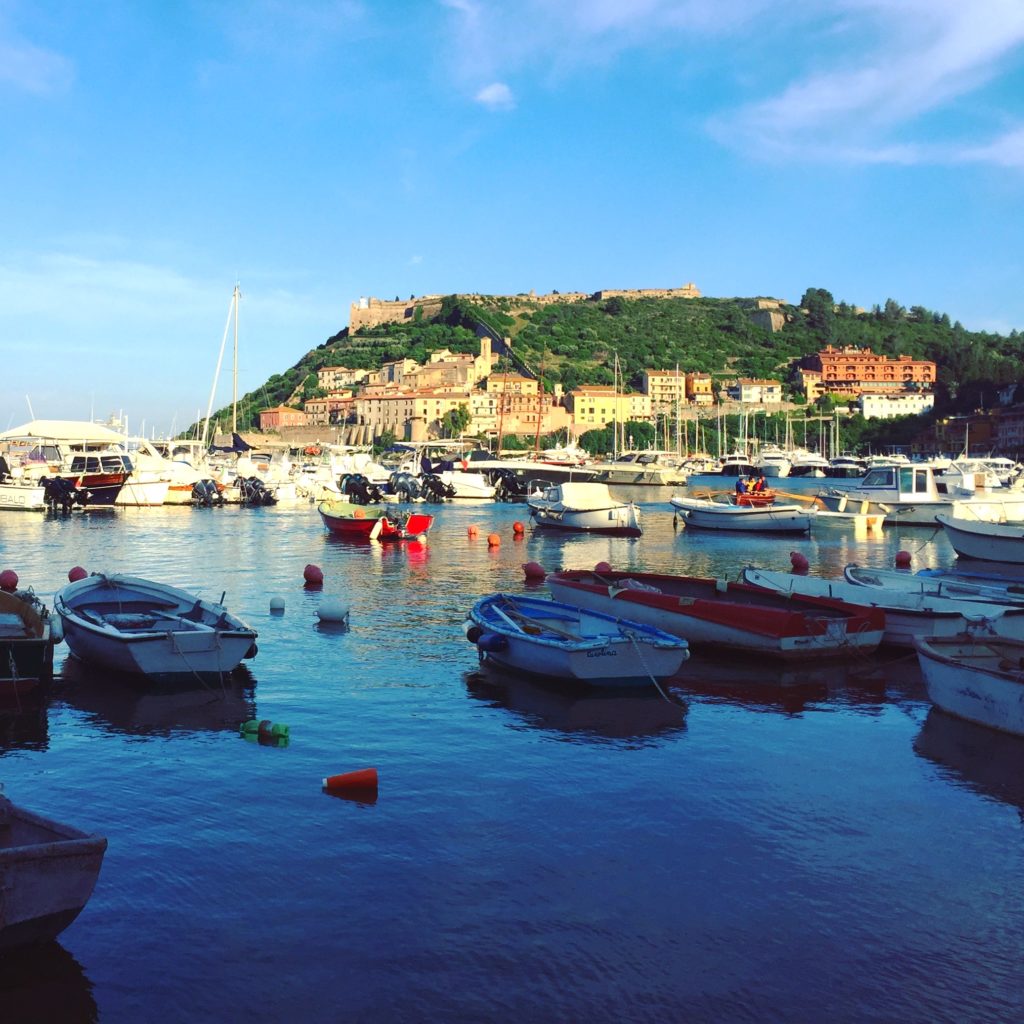
Are you a fan of the Baroque painter Caravaggio? He died of fever on the beach at Porto Ercole. In 2014, the town made a memorial for this tempestuous and brilliant painter. Honestly, I had forgotten that he met his demise in Porto Ercole until my friend and I stumbled upon the memorial.
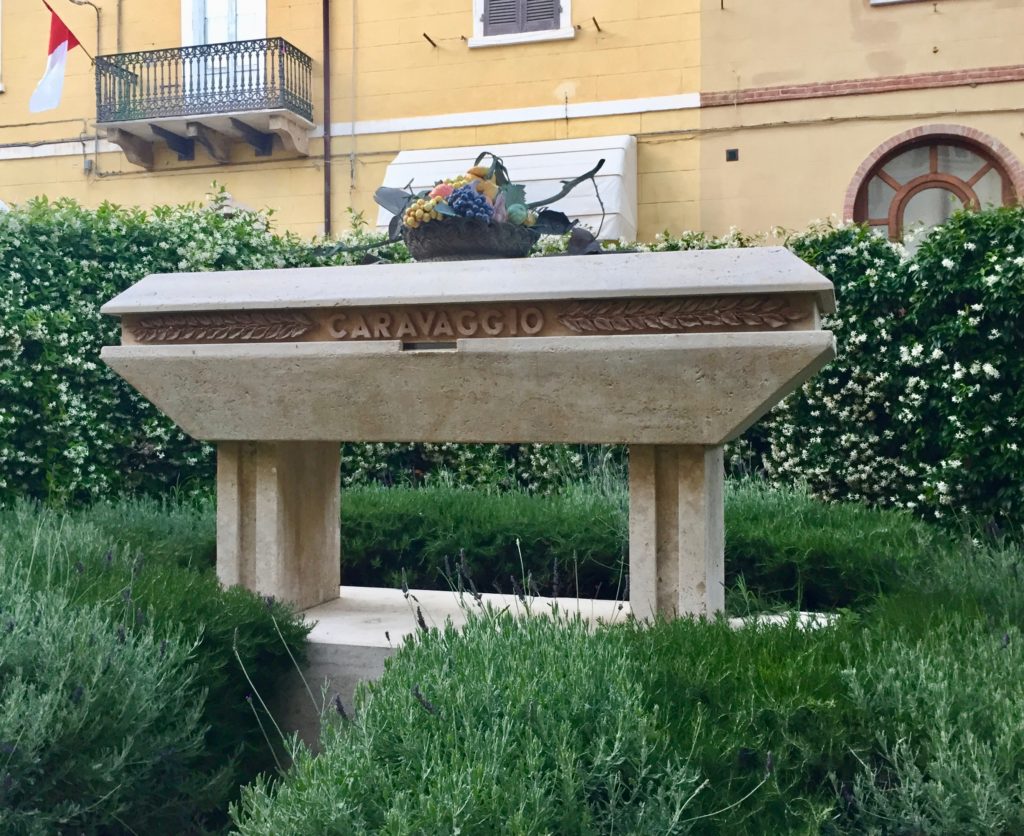
Inland, the Maremma has its share of charming hill towns. We were sea-focused on this trip and only went inland to Saturnia, for the hot springs. (Founded by the Etruscans, the hot-spring loving Romans eagerly took it over.)
Other Maremman hill towns of note are Pitigliano, Capalbio, Massa Marittima, among many others.
Although Saturnia looks close, it took us an hour to drive there from Orbetello. Here, a few kilometers from the fancy spa, is a freebie area where water cascades into natural sulphuric pools.
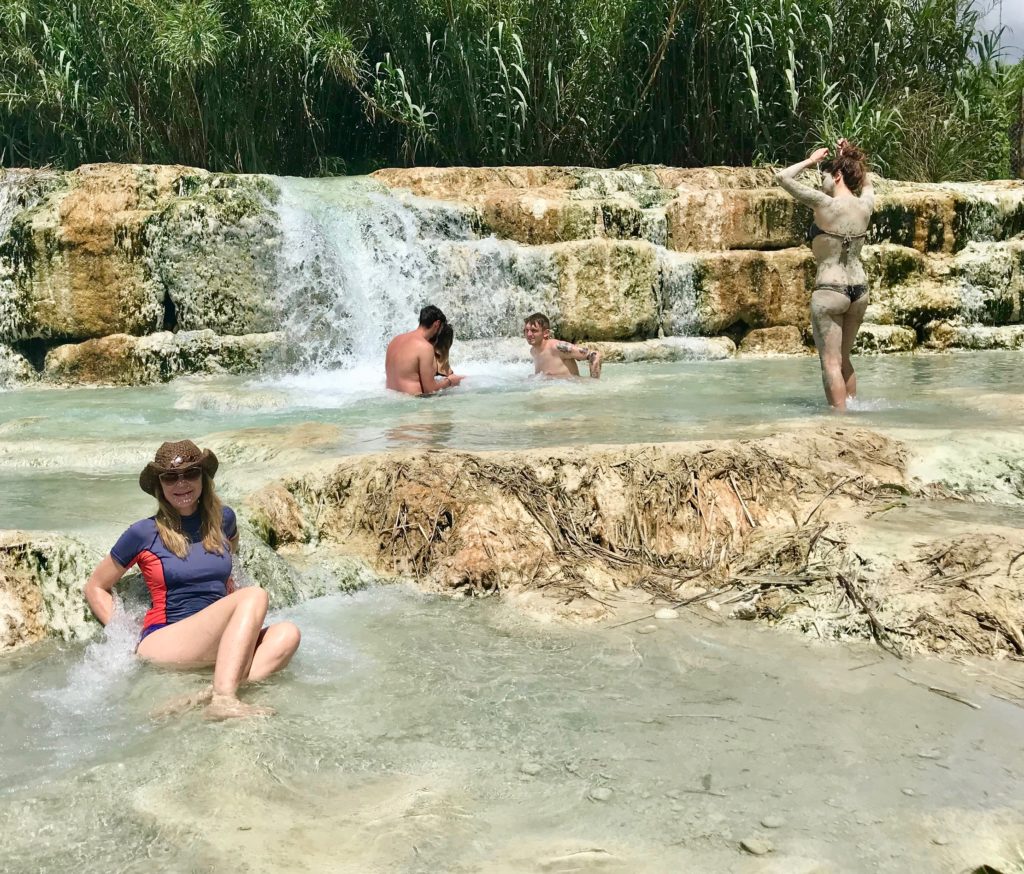

The Park of Maremma was our next stop. It has 25 kilometers of beaches backed by marshes and pine forests, and hills sporting half crumbled watch towers. Entering the park, we slowed down to view some of the famed cowboys on their horses when passing the Tenuta dell’Alberese, one of the main places to see the butteri. This farm offers a range of hands-on events related to the butteri.
Some farm stays offer butteri demonstrations a few times a months. Try Agriturismo Giuncola & Granaiolo and/or Corte degli Ulivi .
In the park, we stopped at the beach so my friends could get a sense of the place, but we wanted to get to Castiglione della Pescaia by lunch time so we didn’t walk the trails where one can see migrating birds, wild boar, fox, and free roaming long-horned cattle.
Castiglione della Pescaia is a seaside town just north of the Natural Park. It was my go-to beach town when I lived in Florence 13 years ago and I was eager to return. My last attempt to return there had been aborted by the appendicitis that I recount in my book.

After a simple lunch at an outdoor table in a piazza we walked up to the medieval part of town, where steep pedestrian cobbled streets lead to ruins of castle. We were enchanted by the stone dwellings with a profusion of jasmine, roses, and herbs in the gardens, the vistas of the blue sea far below, and the happy sound of the swallows flitting along the roof tops.

The last stop we made in the Maremma was to the bay of Baratti and the little hamlet of Populonia (population 17) above it. This bay was a busy trading place for the Etruscans and on the hill next to Populonia is a large Etruscan archeological site.
There are no hotels marring the bay and most of the beach is wild, with only a simple “bagno” with lounges and umbrellas for rent and a rustic bar at one end. The half moon beach is edged by a shady forest of Umbrella Pines (also known as Stone Pines) that lend welcome shade and are quite magical to walk under.
But for me the most magical place is Populonia at sunset. To climb the tower for a breathtaking view, and meander through the artisan shops in the hamlet’s single street, and then end at Il Giardino for happy hour, is to have the magic of the place sink into your bones.

I found myself saying to my friends, “this is when you forget about the failed businessmen masquerading as leaders, this is when the horror of gun violence seems to have fallen off the earth. This is when you slow down and each breath is saturated with the nurturing green and blue of this place.”
My friend responded, “Should we get a B&B and stay the night?”
No, because my cat was waiting in Lucca. But I hope, as I always do, that there will be more visits and magical moments in the wilder areas of Tuscany.
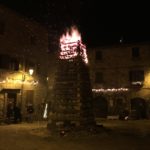
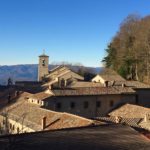
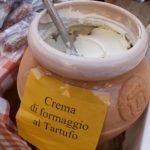
We enjoyed the Maremma / Coastal Tuscany area. Your reviews and history of the places in your blog take us back. Anyone thinking of a traditional Tuscan experience might take note and add a few of these places to their itenerary. Plan well but leave time for serendipity and spontaneity. Tuscany has surprises around every “corner.” My favorite part is the people’s love for their land and history and food and wine. Talk to the locals at the restaurants and gelaterias. Ask them their favorites and recommendations.
So glad you got to see this lovely area of Tuscany! Yes the enthusiasm the locals have when you talk to them about their food/wine/olive oil is infectious!
Absolutely stunning photos, gorgeous color, composition and vistas! You lured me onwards every step of the way!
I was visually entranced and also enjoyed the written information about the area and it is refreshing to know that there are still these beautiful but less touristy places to explore, so much history and your enthusiasm and knowledge bring it all alive!
Thank you! Tuscany lends itself well to photography ???? Yes,the history is so incredibly rich everywhere you turn in Italy. Glad you enjoyed the post!
A lovely article- thank you! It looks as though you belong there and does look like a magical area. The information about the region is very useful!
Glad you liked it. I do find that green places next to the sea feel very nurturing!
looks amazing!! Quindi!! we need to go one day !!! xxx
thank you for sharing.
Ciao bella! Yes, lets go!
Amazing photos and what an inspiring post! I’ve been thinking of visiting this area for a while but now I really need to plan the trip. I live in Tuscany (Arezzo) so I have no excuse!!
Hi, Glad you found it inspiring. I live in Lucca, so we’ve both adopted Tuscany. Where are you from originally?
Thanks for the great article :D. I’m going on a road trip through Italy in about 3 weeks and will be 1-2 days in Tuscany (have been to Tuscany before, but only visited the highlights), so I will keep this post in mind when planning my itinerary!
Great! Let me know if you have any questions as you are planning. Suggestion: 1 to 2 days is not enough in Tuscany!
This is a breath of fresh air just to read about it from afar. Knowing that I will be traveling it Italy soon, and seeing these vignettes is very helpful and very refreshing from my American-lifestyle perspective.
Ciao Sylvia,
Thanks for reading the post. I look forward to hearing more about your plans for your Italy trip ????
Wow! Tuscany seems like paradise on Earth, Chandi. I still haven’t crossed it off my bucket list but your post was so motivational that it made me think about it. How many days would you recommend staying there?
Hi Lydia,
When you ask how many days, are you asking about the whole region of Tuscany or the part of Tuscany that my post is about? The whole region is large and has a lot of areas with varied landscapes and different things to offer. Florence, as you may know, is the capital of Tuscany and a visitor who is excited by Florence’s history and art, and shopping, and foodie places, and general outstanding beauty, could easily be happy for weeks just in Florence.
The Chianti zone south of Florence has wonderful landscapes, great wine, and charming villages. The region south of Siena called the Val d’Orcia has stunning landscapes, excellent wine, and wonderful hill towns. The Maremma that my post is about, is also in the south of Tuscany, but over by the coast. I’d say an absolute minimum of 3 days in each of those areas.
I live in Lucca which is a charming and tranquil town with amazing walls, west of Florence. North of Lucca is a mountainous area called the Garfagnana that has a more rugged look, with stone villages that are much less touristed than the aforementioned places. If you wanted to see a lot of the countryside areas of Tuscany and a few of its famous cities, like Florence and Siena, a month would be good!
Chandi – I wish you wouldn’t have written this! Ha, half-joking! Now the secret is out…the Maremma has always been one of my favorite somewhat “undiscovered” areas of Italy. I have been to many of the areas you mentioned, but many I have not. I would go back here every year if I could. As always, I love your writing – part travel advice, part history, part personal. Keep up the great work.
Thanks Jeni!
Hope some day we can be in Maremma at the same time!
You should make this post like into a definitive guide or something. I bet a lot of your new readers that come to this site would want to be able to find this post. It’s too good to keep secret!
Thanks for the feedback Brian. If I can get some time I’d enjoy expanding on this and making it into a guide. This post however is not secret 😉